
Must-Have Email Marketing Tips to Boost Your Revenue
If you're looking to level up your email marketing, this article is for you. We share how to ace the 20% of email marketing strategies that lead to 80% of the financial results.
This blog is based on our podcast episode with Val Geisler, email marketing expert and founder of Fix My Churn. Listen to the full episode for our comprehensive advice on successful email marketing and all of her expert email marketing tips.
Ready to begin improving your email marketing strategy? Let’s get started. In this article we cover:
- Why email marketing is your best tool
- Build and grow the right email list
- How to speak to your audience to create customer loyalty
- Must-have email marketing campaigns and email automations
- Key email marketing tips for converting and retaining more subscription customers
- Testing, testing, is this thing on?
Why email marketing is your best tool
Email is still the most effective tool for marketing your business. In 2020, the average return for email marketing spend was $36 for every $1.
Through email, you have direct conversations with people who chose to opt in – people who actively want to hear your sales pitch. This captive audience is open to hearing how your brand or product might make their life better.
On top of a captive audience, the market share for email is huge. In 2020 there were a recorded 3.9 billion daily email users. That means billions of opportunities for new subscribers.
If you don’t use every email to connect, it’s a missed opportunity to convert and retain customers.
But how do you find the right people to connect with in the first place?
Build and grow the right email list
Email pop-ups on your website are a controversial topic. So, let’s outline 3 of the common levers Val Geisler shared during our conversation that companies use to grow their email list:
1. Discounts
Unfortunately, discounts aren’t enough anymore. Val specifically noted “20% doesn’t feel special anymore. Even talking to brands about black Friday and they’re like, well, we’re going to offer 20% off site-wide. I’m like, that’s not going to do it for you. That’s not special in the inbox.”
Discounting is also a strategy that reduces your profitability and your margin right out of the gate. Those customers only return to your online store when you offer another or a better discount.
Long Term customer value will come from forming a stronger relationship with a better fit customer versus opening the funnel wide to get as many people in the door as possible.
Example of a website pop-up that uses discounts:
“10% discount off your first order when you sign up to our mailing list”
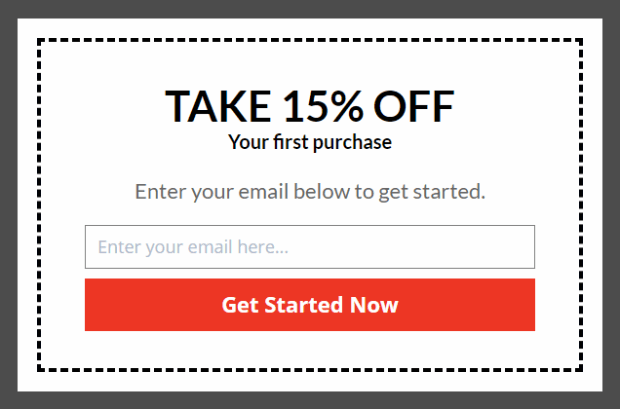
2. Value
You want to present a compelling offer to grow an audience that’s maybe not just going to be a bargain shopper but a lifelong consumer, a brand advocate. To do this, you need to offer something that they need, that enhances their life.
Example of a website pop-up that adds value:
“10 recipes for quick and easy dinners”
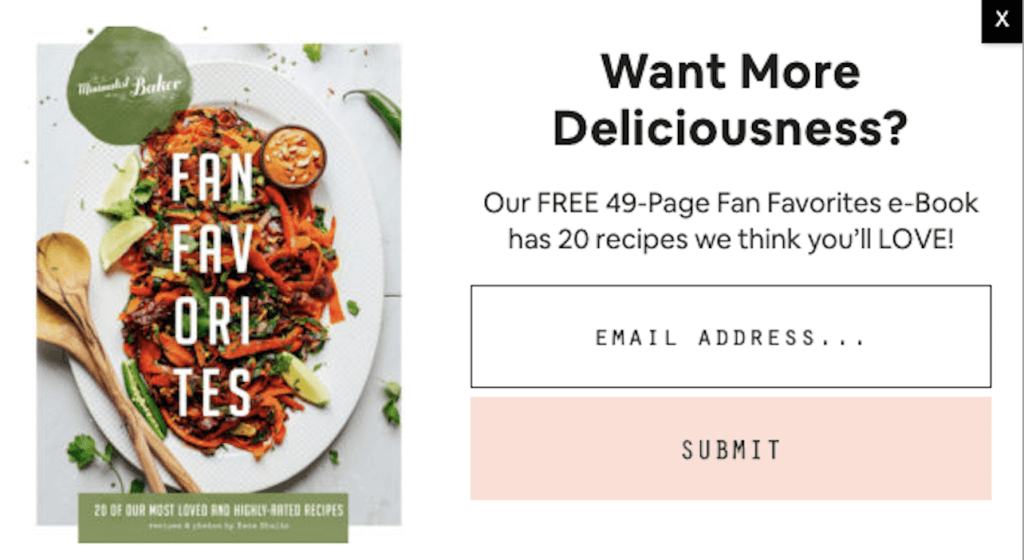
3. Exclusivity
People want to feel special and included. Build your message around creating a community of like-minded individuals with similar interests.
For example, set up an exclusive Instagram account, a subscribers-only podcast, private blogs or articles.
Example of a website pop-up that features exclusivity:
“Join our community and get exclusive access to the members-only products”
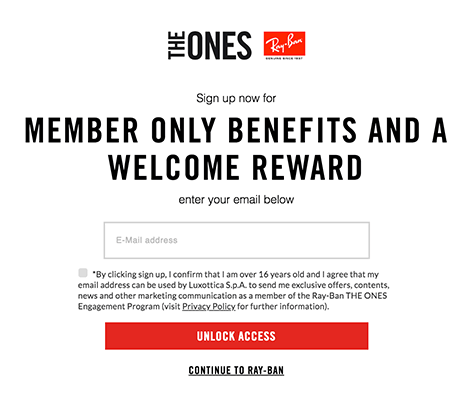
One of Val’s top email marketing tips: If you are looking for a high average order value and lifetime value, it is more valuable to be creative about the second and third option and not just default to discounts.
If you are looking for a high average order value and lifetime value, be creative about building your email list through exclusive or added value content rather than discounts. - @lovevalgeisler Share on XHow to speak to your audience to create customer loyalty
To convert your list to customers, you need to build trust. People are not going to spend money with you until they trust you.
All human beings want is to feel seen and heard. You can do that with email, connecting your email subscribers with your products in a way that helps them see why this product is designed for them, personally.
Be personal
There’s a huge opportunity within ecommerce to personalize your brand through your emails. Attaching a person to your emails humanizes your brand and gives it personality.
For example, The Good does not send emails just from The Good – they come from James or Jon at The Good. There’s a picture of the person, what their role is at the company, and they are even sent from a personal email address.
It’s really easy to walk away from a brand, it’s much harder to walk away from a person. Even if they don’t know you, you’re in my inbox, I know you’re name and you’re talking to me like I’m a person
The emails don’t have to come from you as the founder, they can come from your team – CEO, founder, customer service star, product designer. It also doesn’t always have to be the same person.
Tell a great story
Storytelling goes a long way.
A lot of companies focus on the product itself, what goes into it, using images of the design and packaging.
Use your email newsletters to tell a story about your product and create more engagement. For example, show images of someone using the product rather than just the product on a blank background.
Then use your email copy to tell a story about this person. Focus on how busy they are, how your product saves them time and money, and how your company makes their life better.
A great email focuses on what your customers care about. Products that benefit and solve problems for people like them.
A Guide to Email Marketing For Ecommerce Businesses
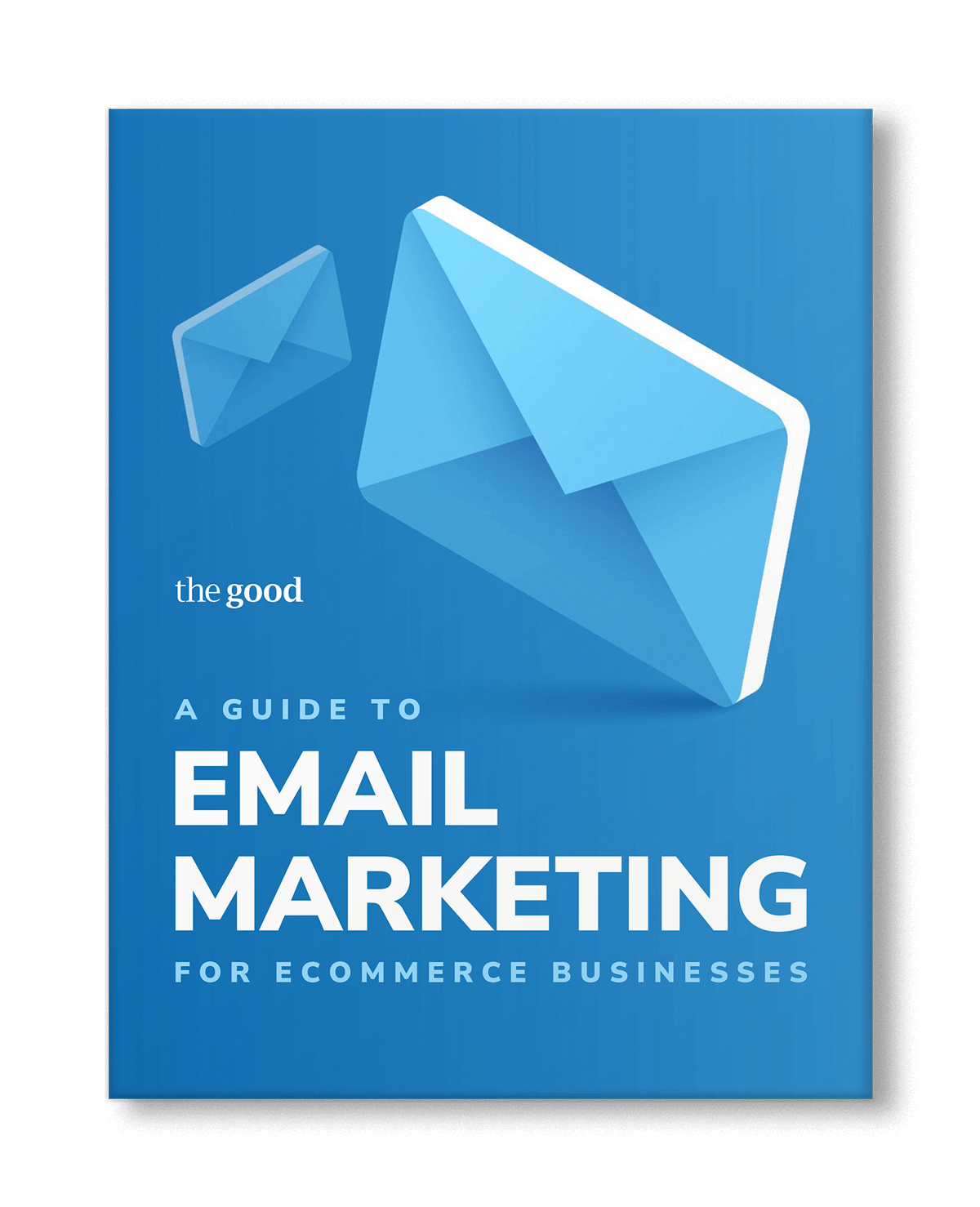
Make it about your customers
You have existing customers who love your products. Using their stories will build trust in your product to new customers by increasing your reputation.
Find the people who leave you 5-star reviews, shout about you on social media, and get them on the phone. Try to record a video interview, try to record an audio snippet, and then pull that over to your emails and tell the story of how your product legitimately changed their life for the better.
Must-have email marketing campaigns and email automations
1. Welcome email series
A customer signs up on your website after following your discount code, ebook, or community invite. This is their highest point of interest aside from purchasing from you. Now it’s up to you to showcase who you are and build that relationship.
They might be brand new to your brand or perhaps they have browsed your site a few times. Usually, they will sign up before they have purchased from you. This is your opportunity to convert.
Your welcome email series is the first time you enter someone’s inbox with a few emails introducing the brand.
These are letter-style email templates telling your story, building that trust in who you are. Email marketing best practice is sending one email every day for five days or every other day for 10 days.
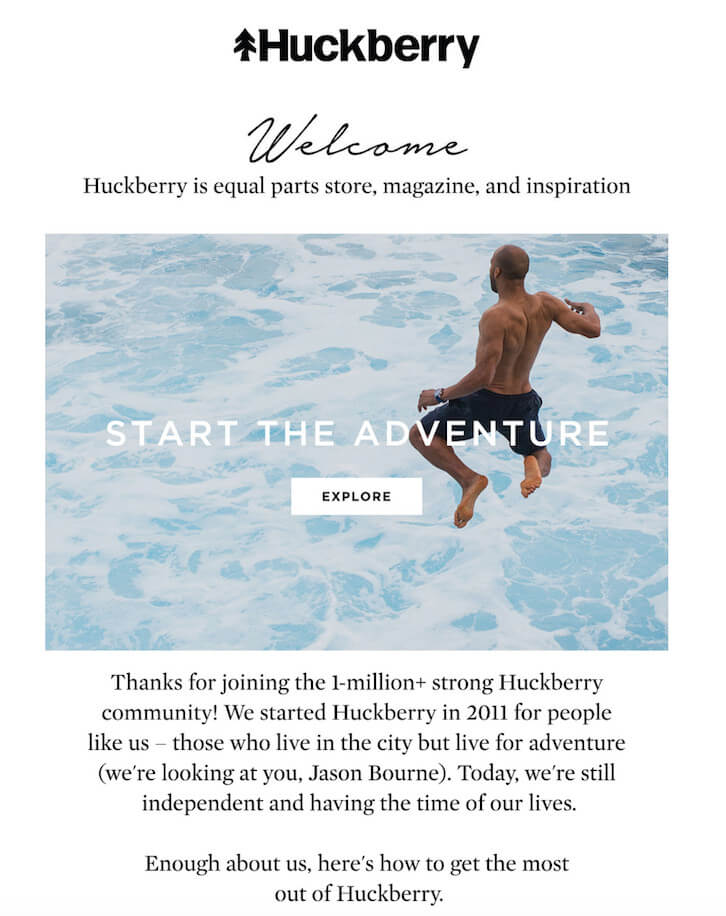
The first email you send:
Introduce yourself. This might be you the founder, the product designer, anyone from the team. Perhaps a team photo or a photo of you and your family if it’s a personal brand.
Then start to tell your story. You don’t need the whole picture, you could include why you started the company, what’s important to you, your ethics, why you stand behind your product, and all the different values that it has.
Give a personal sign-off, maybe even a handwritten signature at the end.
From there, you can follow-up with an effective email marketing series to share more about the story – why you’ve created this, who is it for, the people behind the product, and on your team.
You can also use the first email to set up for the next email and build anticipation.
Val uses the following as examples:
“Hey, tomorrow Jessica is going to show up. She’s our customer success lead. She’s incredible. She talks to our customers every day. She’s going to come tomorrow and talk to you about a few people who have had great experiences with us and the results that they’ve seen from our product.”
or
“Tomorrow Jessica, our product designer is going to come tell you about why she makes the choices behind the fabrics that she selects.”
Setting up the person that’s coming in the next email and what they’re going to talk about gets the reader excited about it and interested in then the next day, when they see Jessica from your brand, in their inbox, they think:
“I already know what this email is about and I’m going to open it.”
It also makes your team feel really cohesive.
As you send these personal emails, you’re giving your audience reasons to open the email. If it’s something that they want to read then it’s more likely that they’re going to open your sales emails further down the line because they feel more connected to the brand.
2. Lifecycle campaigns
These are your regular emails to keep customers that you’ve already attracted.
You want to have a consistent message that you’re sending out once a week or twice a week reminding your customers you’re here.
These emails are where you really grow the trust in your brand and relationships with consumers. Just like your welcome series, you use these emails to share your brand personality and your story as it continues.
The content you can include to really captivate your audience includes:
- Education about your products: Why you offer these products, how you source them, sustainability.
- Product developments: Changes in existing products; new products they might like.
- Company developments: Awards and accolades, know-how, news features, rebrand, new team members.
These campaigns go out regularly alongside your transactional emails and are a key marketing channel.
3. Transactional Emails
Transactional emails are automated based on a consumer action, for example, abandoned shopping cart or post-purchase.
Transactional emails are opened at twice the rate of promotional emails. This means better deliverability and less people unsubscribe.
A lot of brands send standard emails based on their industry. Order receipts, delivery confirmation, etc.
To stand out as a brand, the standard is not good enough. These types of emails are based on transactions, but they don’t need to be just transactional.
Transactional emails are a huge opportunity for your brand to share personalized messaging. Add value with these automated emails in the same way you do with your regular content.
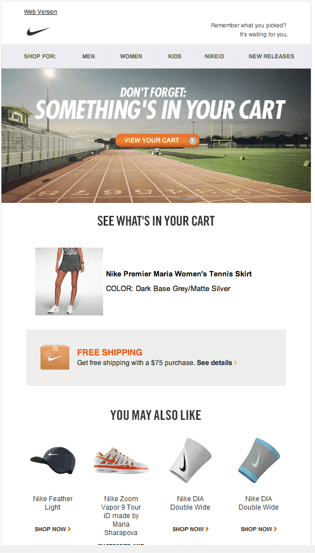
Here are a few examples and email marketing tips to show how to add value with these marketing automations:
- Add value and build interest: You want your customers to feel like they have made the right choice purchasing from you and look forward to getting their goods. A great example is for ecommerce companies selling food products. While your customer waits, send recipes related to that product, a shopping list for other things they’ll need with links to products on your site, and get them excited for what they’ll be cooking. This way, when the item arrives they’ll know exactly what to do with it, which means they’ll be more likely to use it and need to buy more from you.
- Share stories: Whether you want to build a sense of community around your product or are looking to increase reputation, a great method is sending stories of other customers. People like to have their decisions supported by others, so seeing someone else like them benefitting and appreciating it will validate their purchasing choices. Bonus is if you have ambassadors, influencers, celebrities with a reputation that can be attached to your product, again sharing their personal appreciation for it.
- Educate: Teach your customer about your product. What is it made from, where it’s sourced, how to care for it. Brooklinen has a great post-purchase flow for their sheets. They send an email post-purchase, pre-delivery, with details about how to wash the sheets to prep them before making up your bed. The focus is here’s the specific way that you need to care for your sheets for the best results. This means that when the product arrives the consumer already knows what to do to get the most out of their product.
- Referral requests: Once your customer has received the product, then this is the time to find out if they liked it and suggest they refer you to a friend. The key here is allowing time for them to experience your product, not just jumping in the moment it’s delivered. This way, you will get real feedback, there’s more likelihood of referral, and you’ve reminded them about you after purchase.
Best email marketing tips for converting and retaining more subscription customers
Subscriptions are a great foundation to build a business on top of because it’s recurring revenue which has a longer life cycle and a higher customer lifetime value in general.
If you have a consumable product and you are not offering a subscription service, go set that up on your website because you are missing an opportunity.
To create a subscription you don’t just need a consumable product. For example, there are t-shirt companies like Monthly Tee Club where you get a t-shirt once a month and it’s at a discounted rate to the usual price. Then you also get a discount on any other products on their site. They can have several hundred members for this once-a-month t-shirt.
There is an opportunity for almost every brand out there to at least try some kind of membership or subscription.
When you have your subscription service built, you’ll want targeted emails to convert and retain those subscribers:
Subscription Conversion
Identify your customers who have been buying regularly from you, perhaps 3 or 4 times – perhaps even the same product. These regular customers are the best place to start building your subscription.
Invite these customers to your subscription service by educating them on how it will benefit them. Use the values that you’ve built your brand upon already in your emails – discounts, added value, or exclusivity.
The messaging is simple:
- Discounts: “Members receive special discounts each month and free delivery”
- Added value: “If you’re going to keep coming back to us to buy this, why not put it on autopilot and save time”
- Exclusivity: “Come join our membership of like-minded people”
An example could be around Black Friday. Your members receive exclusive access to a preview of your Black Friday sale one week before. So you email your regular customers 2 weeks before the sale to let them know that if they sign up to membership in the next week, they will also get this exclusive access. Sweeteners can help, for example, you have limited quantities of items on sale so they could miss out altogether if they aren’t a member.
Subscription retention
Once you have subscribers, you want to ensure they remain.
The customer journey is the key to building and sustaining your subscription management metrics.
This is where it comes back to meaningful content. A few great ways to engage with your subscribers:
Just as with one-off purchases, you want to educate your consumers on the products they purchase and how to use their items. Perhaps there’s research supporting their items, or your brand has received awards or accolades. Education should be about reinforcing belief in your brand and products being the best thing for them.
You can also build transactional email flows which improve subscriber retention, going above and beyond with your customer support.
One example is emailing to remind subscribers with a monthly order that their order date is coming up. Simply asking “Hey, before we ship it, do you want to make any changes?” could make the difference, giving consumers the choice will show you care that they are getting what they need from you, and not just counting on their monthly fee.
Highlighting the value of a subscription is also another great way to retain subscribers.
An example is Thrive, which emails members how much money they’ve spent on membership versus how much money the consumer has saved over a period of time on that membership. They even celebrate when you’ve crossed the threshold of paying back your membership.

Testing, testing, is this thing on?
You’ve set up your welcome series, transactional emails, have a weekly newsletter sharing your brand personality and story.
After all that work, what I’m about to tell you is going to hurt.
You’re going to change it all.
Emails are never perfect. You should be testing your emails and adapting them regularly.
The best email marketers will tell you that you want to see some emails fail. Why? Because then you know what works and what doesn’t.
That’s why testing is your best friend. You can try things out, see what works for your customers, and adapt.
How to test your emails
A/B test
A/B testing is creating two different versions of your emails and sending them to different segments of your list. It applies to everything from subject line and sender, to content and frequency.
The statistics should speak for themselves, from open rates to click-through rates, you’ll build a picture of which is more successful with your list.
Campaign Monitor, content marketing experts, found a redesign led to a 127% increase in click-throughs.
Test on yourself
As a big company or a small business, you should know what your customers are seeing from you.
Whether the founder, CEO, or Head of Marketing, the best way to understand your customer’s journey with you is to get on that journey yourself.
Sign up to your email list, purchase a product, abandon your cart, go through the returns process.
See what it feels like to be your customer.
Once you’re on that journey, you’ll be able to see things that you couldn’t tell as you wrote the content, or from your email marketing service like Mailchimp or Constant Contact.
Val mentioned during our conversation, that as you read them, you might start to say to yourself things like “man, we’re sending a lot of emails, we use a lot of emojis” You might realize that you need better segmentation or to optimize better for mobile devices.
Create a folder in your inbox and put everything you receive in that one place, so you can get that consumer experience blended with the continuity of seeing everything together with no other noise from other emails or anything else that’s going.
Now it’s time for you to get started
If you want to increase your conversions and revenue, then optimizing your emails is the first step. The email marketing tips in this article offer just 20% of the work that we believe leads to 80% of the results.
Whatever your product or brand, you need to build your email list, personalize the messaging, make sure you’re in touch frequently with valuable content that converts and retains your audience. And make sure to test it regularly.
Are you looking for more actionable digital marketing insights? Sign up to receive our weekly insight articles or subscribe to our podcast to learn from other industry experts like Val Geisler.
Enjoying this article?
Subscribe to our newsletter, Good Question, to get insights like this sent straight to your inbox every week.

About the Author
James Sowers
James Sowers is the former Director of The Good Ventures. He has more than a decade of experience helping software and ecommerce companies accelerate their growth and improve their customer experience.